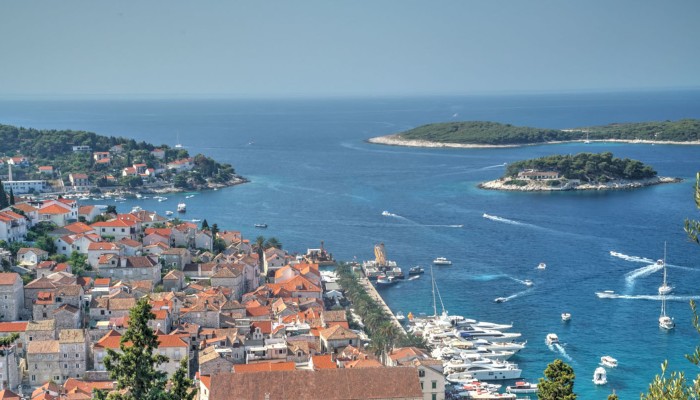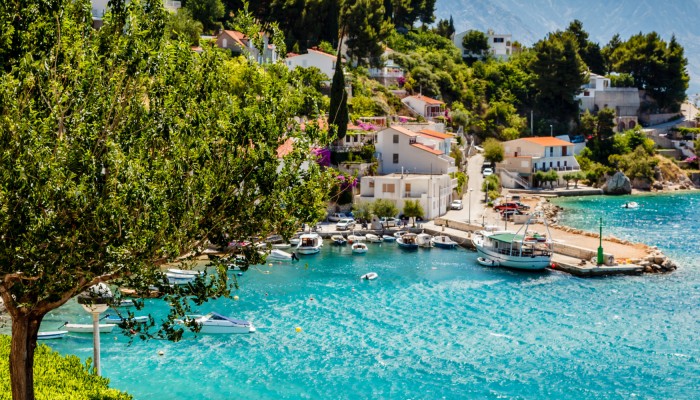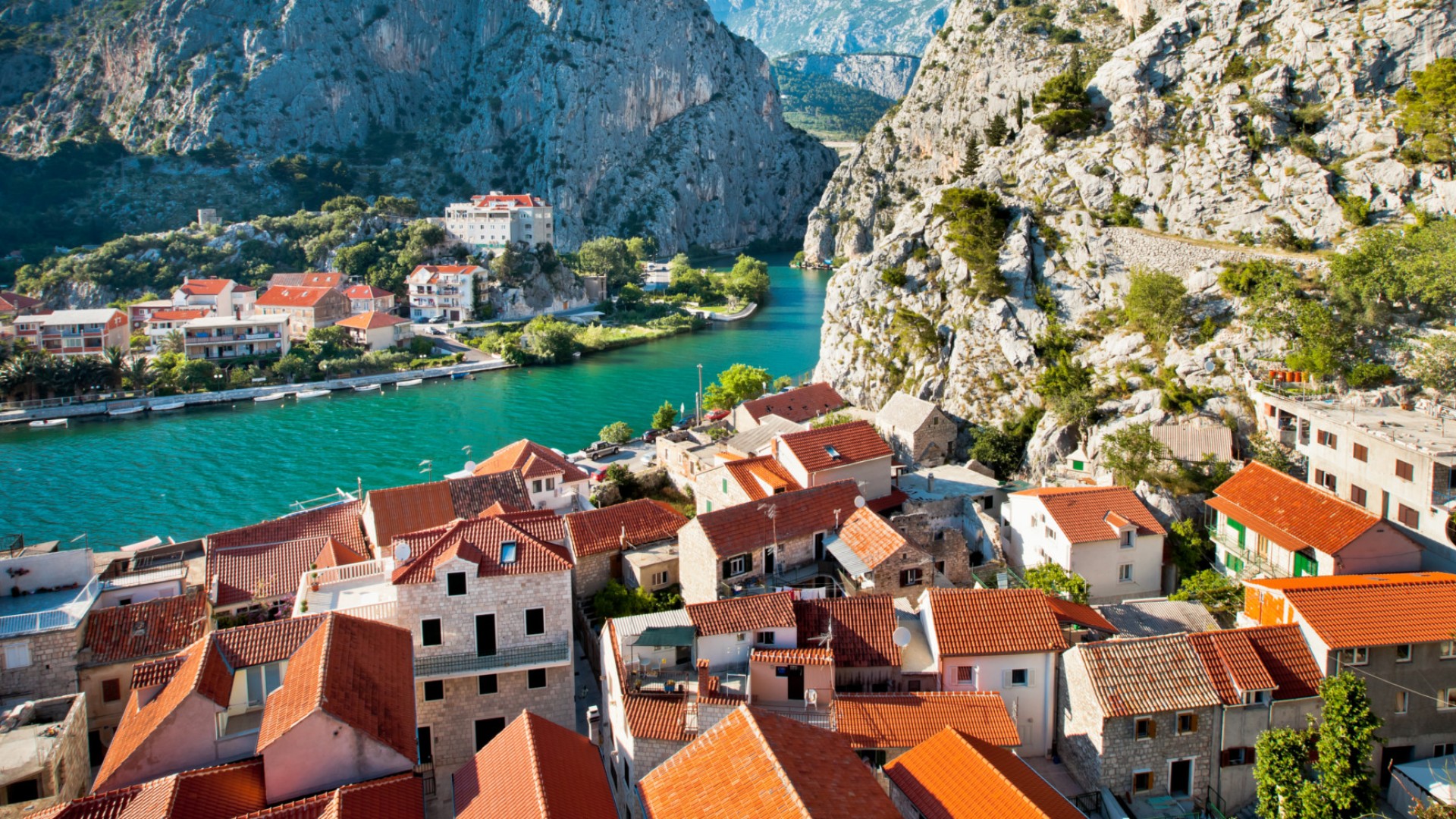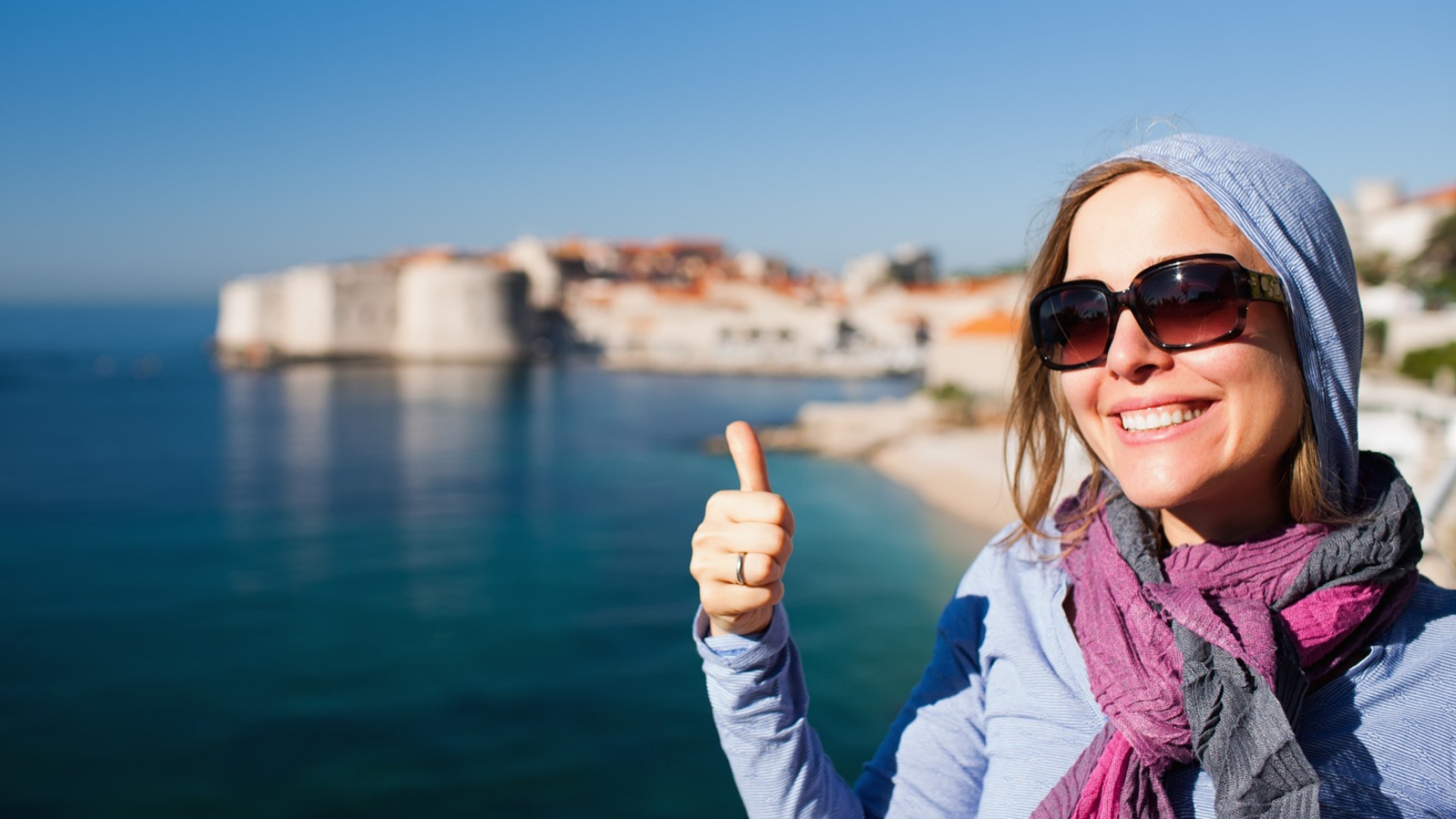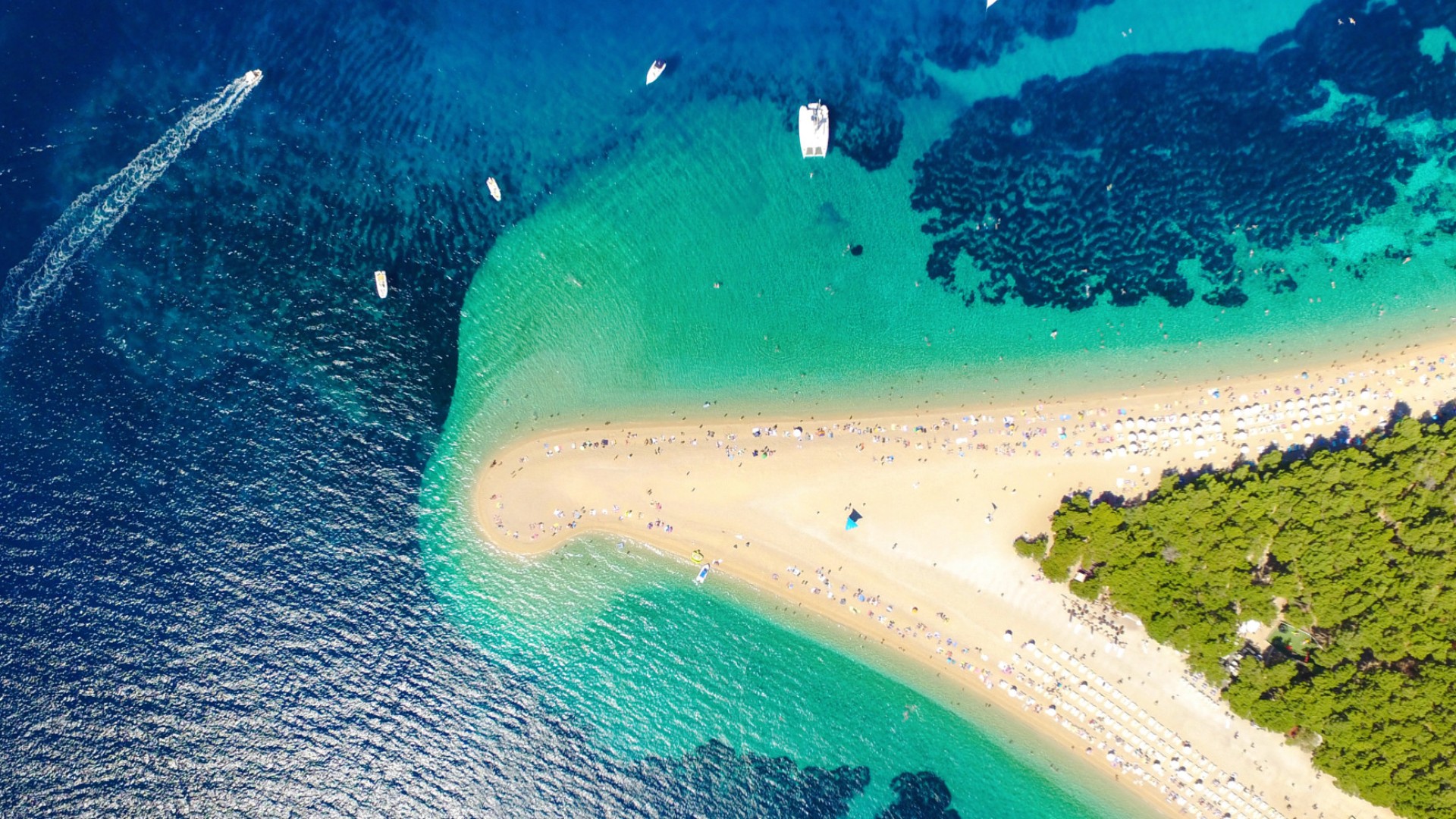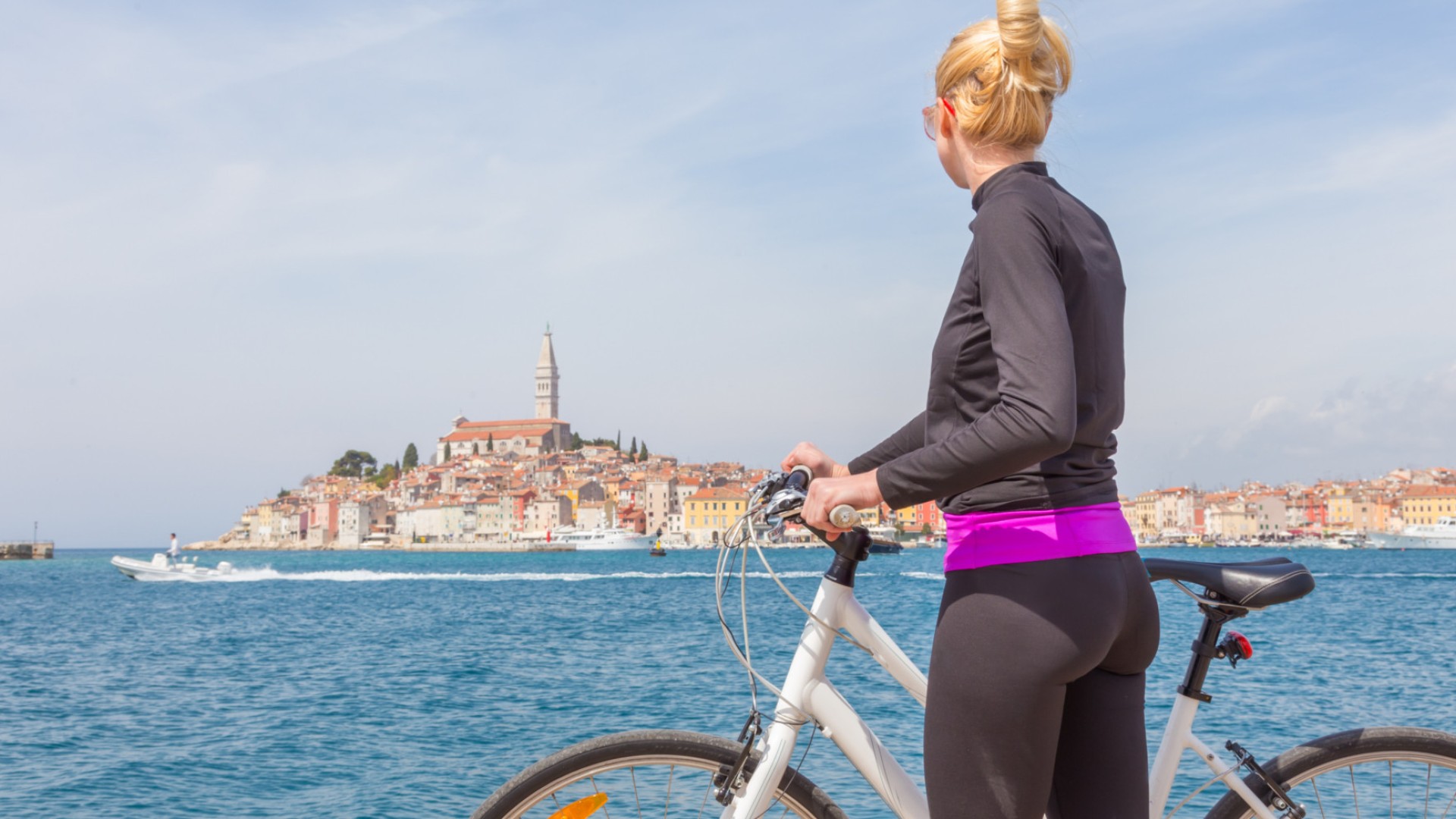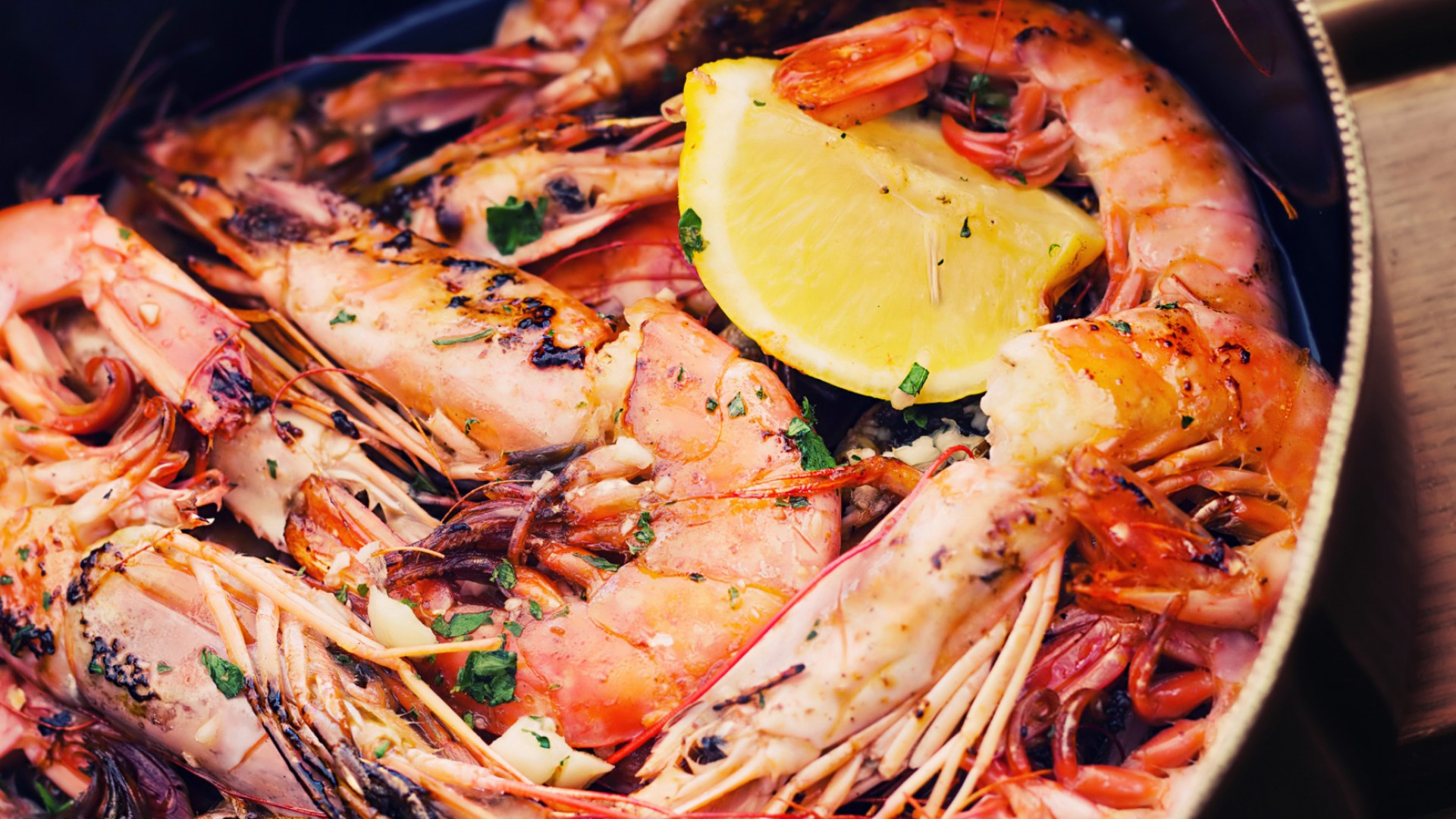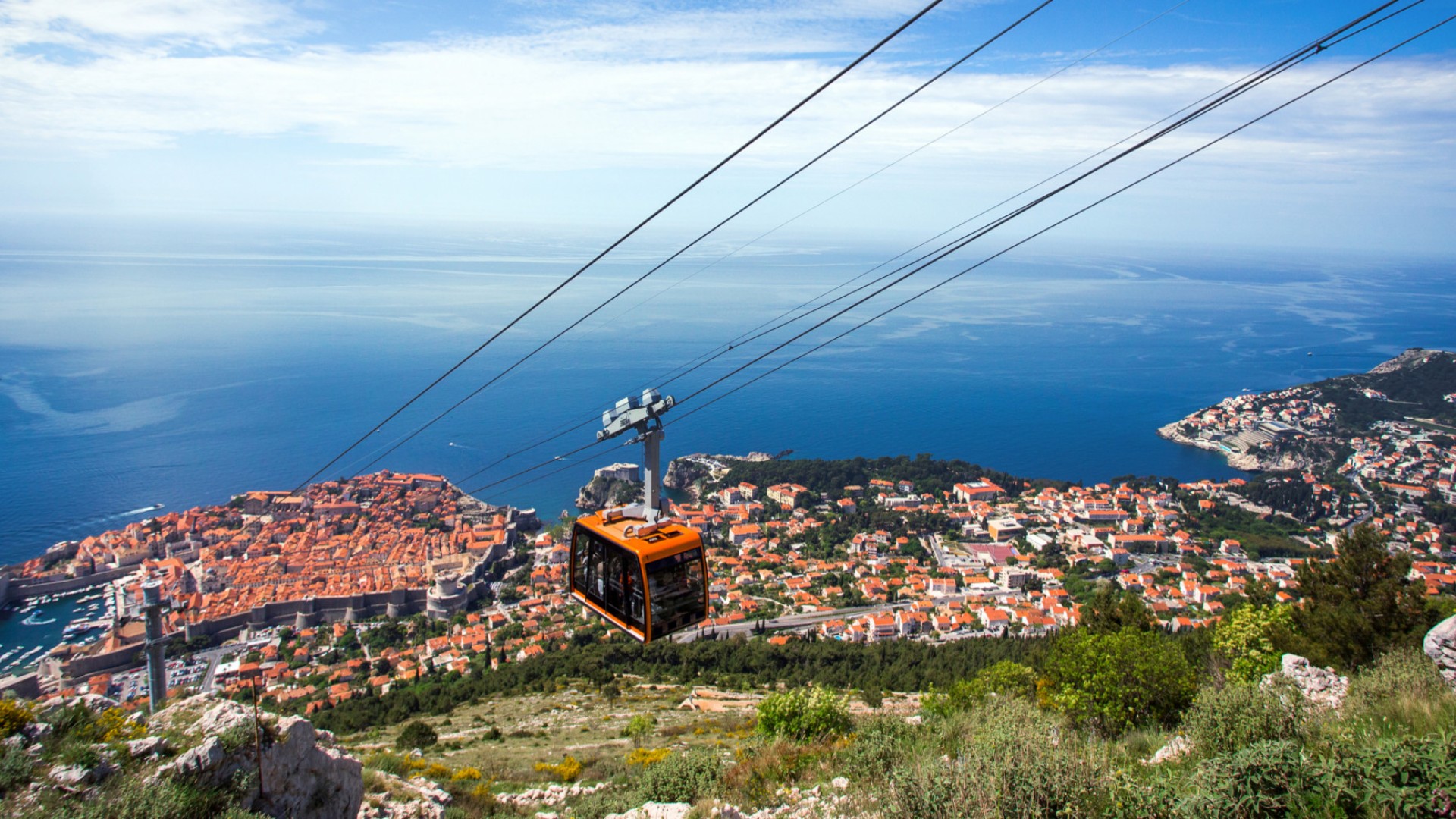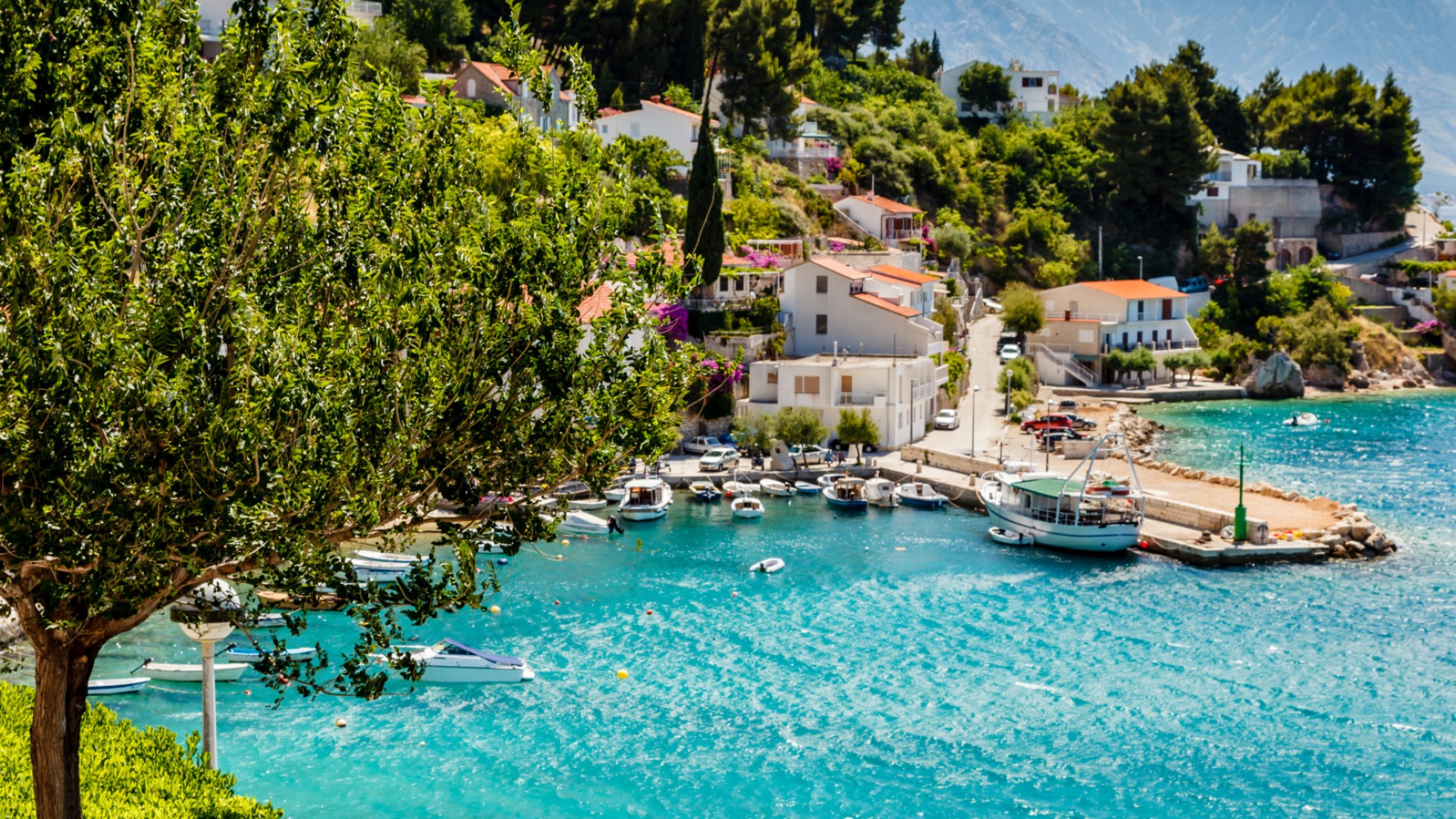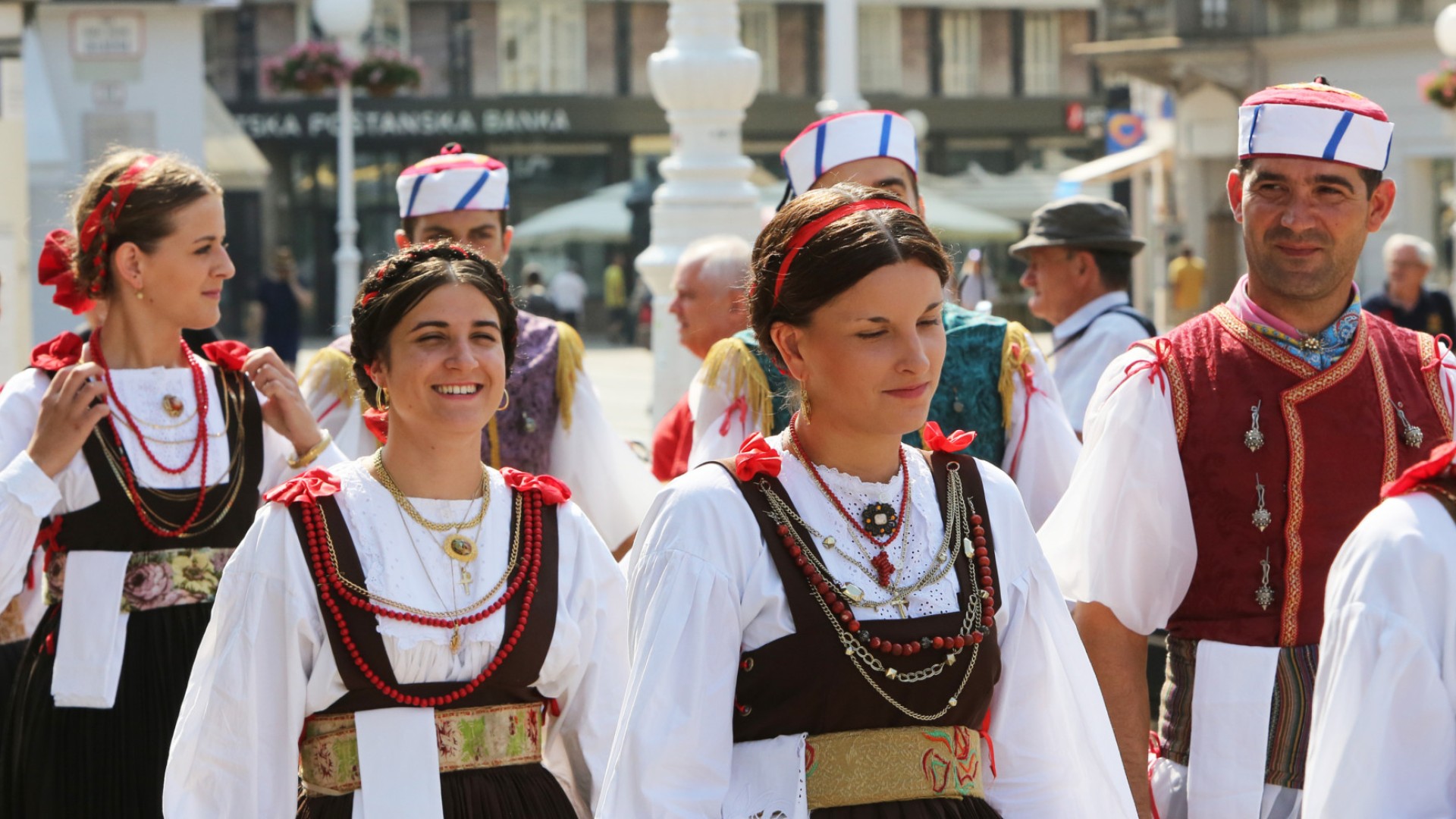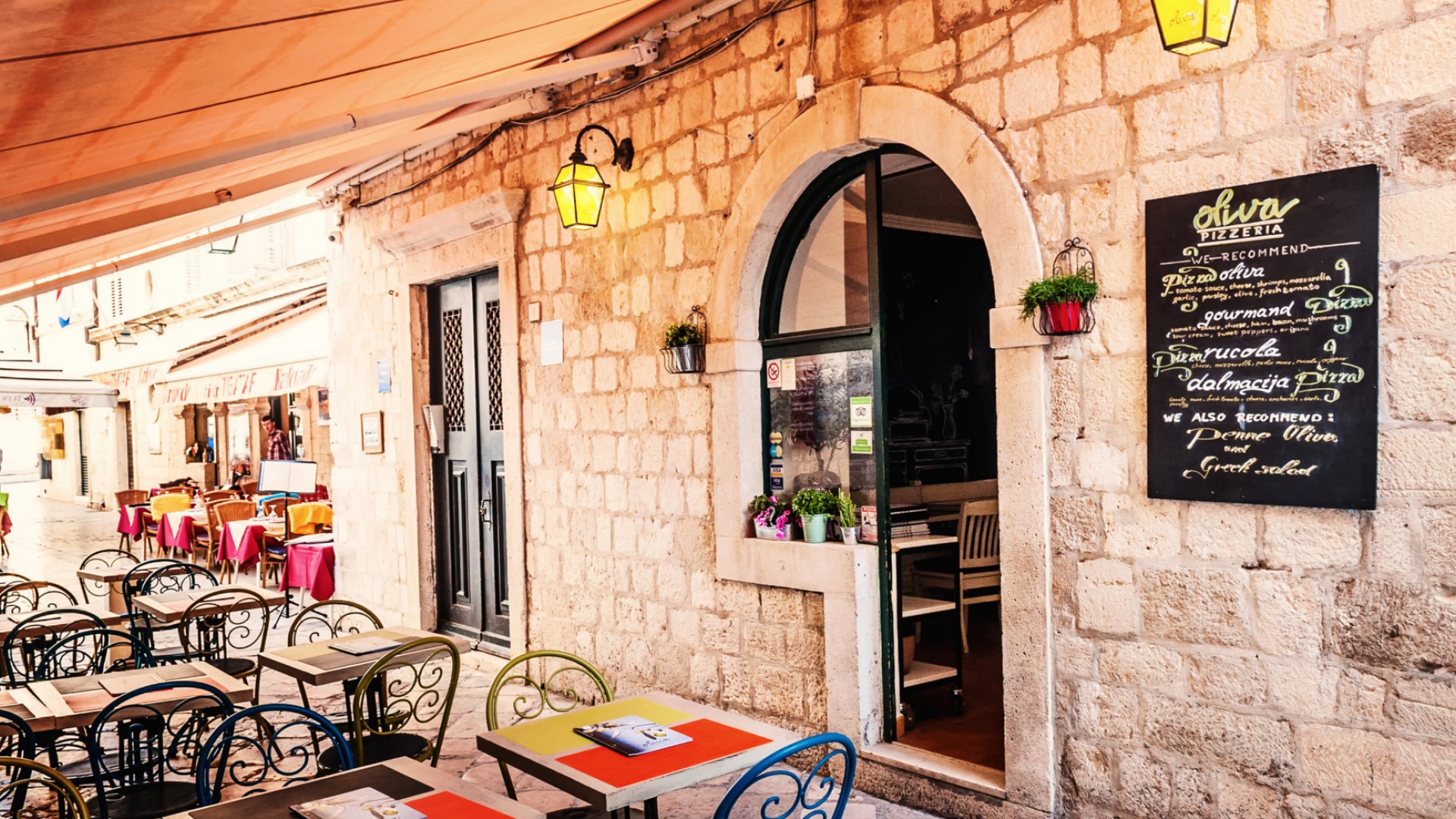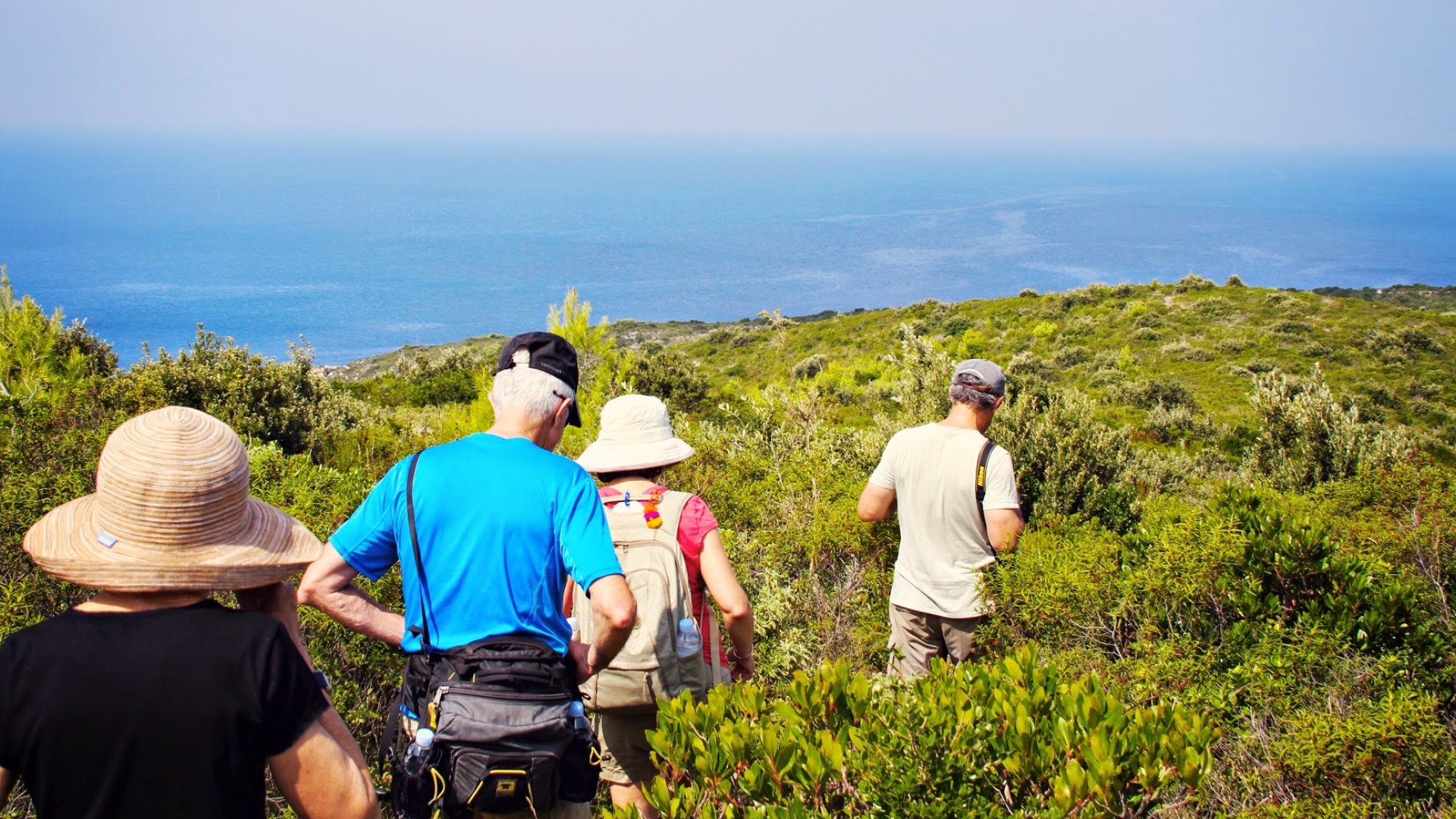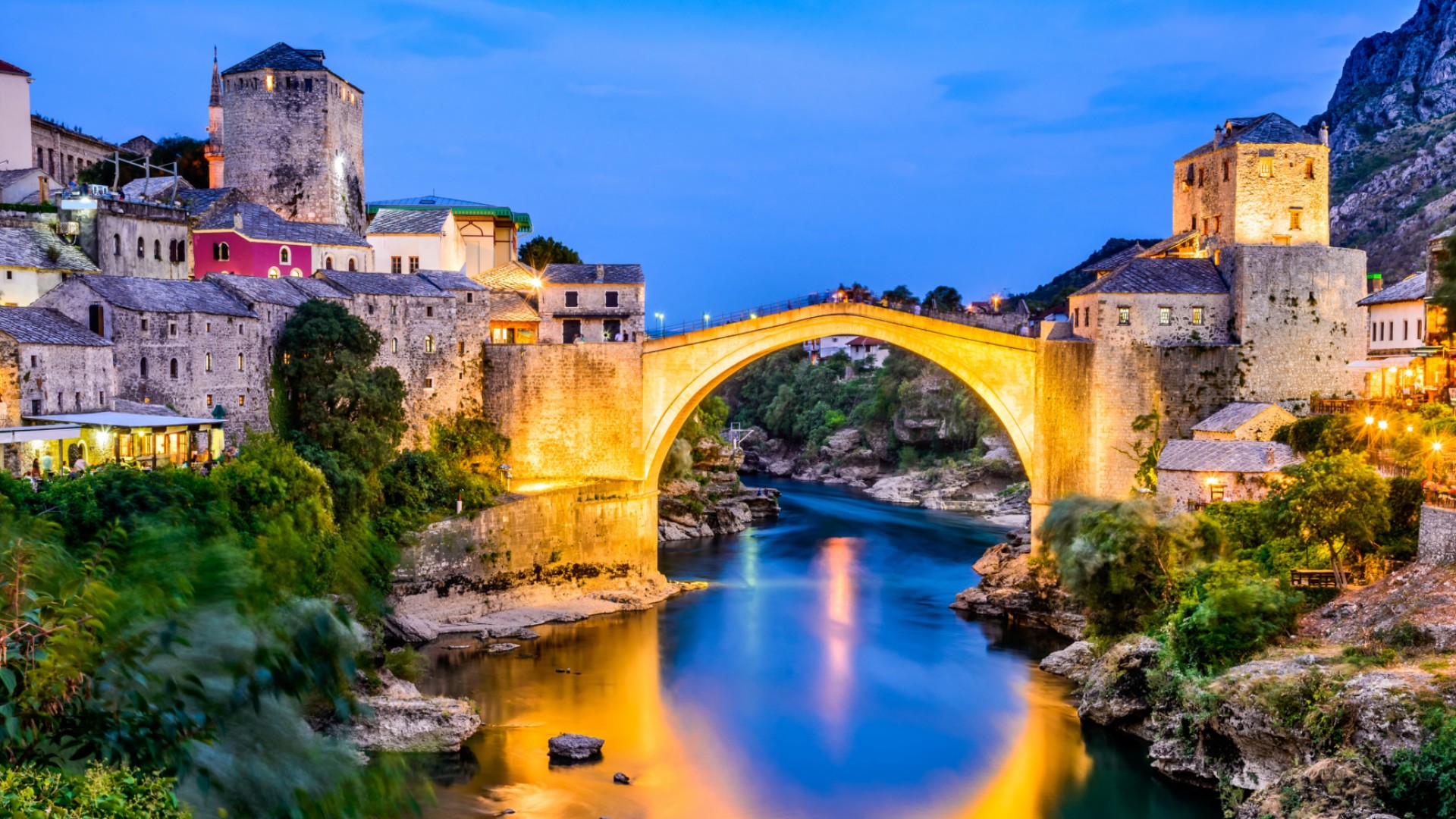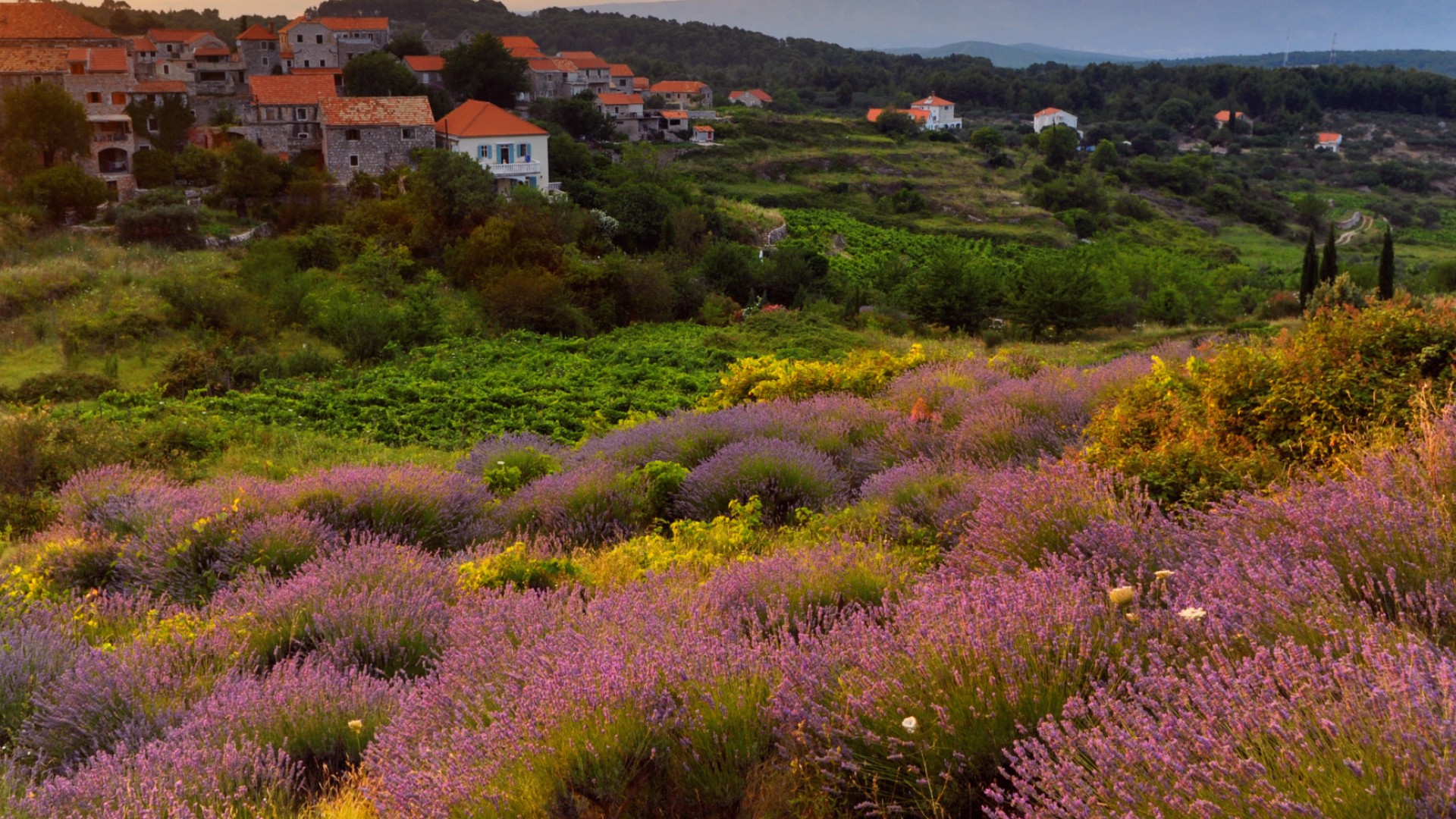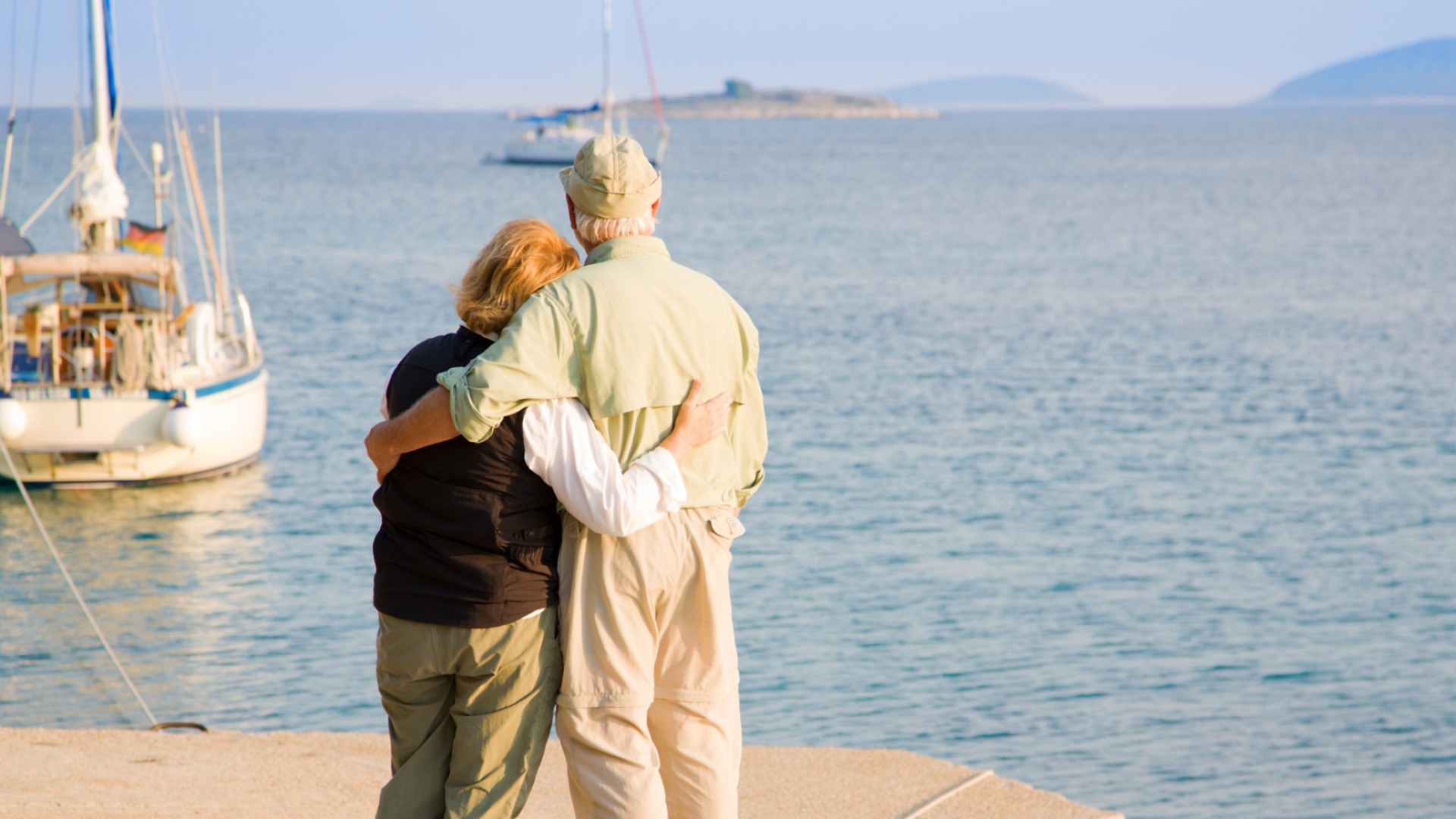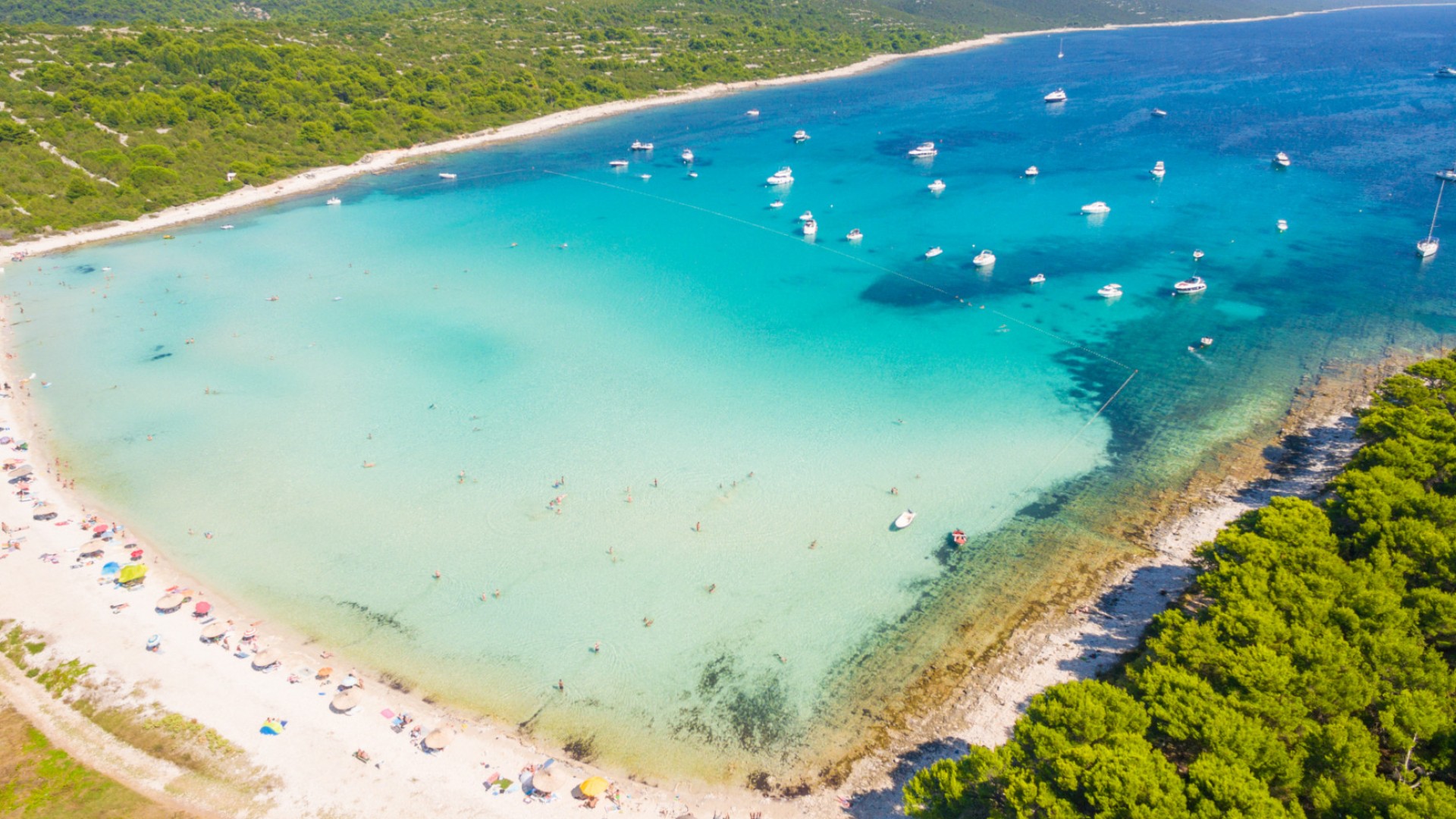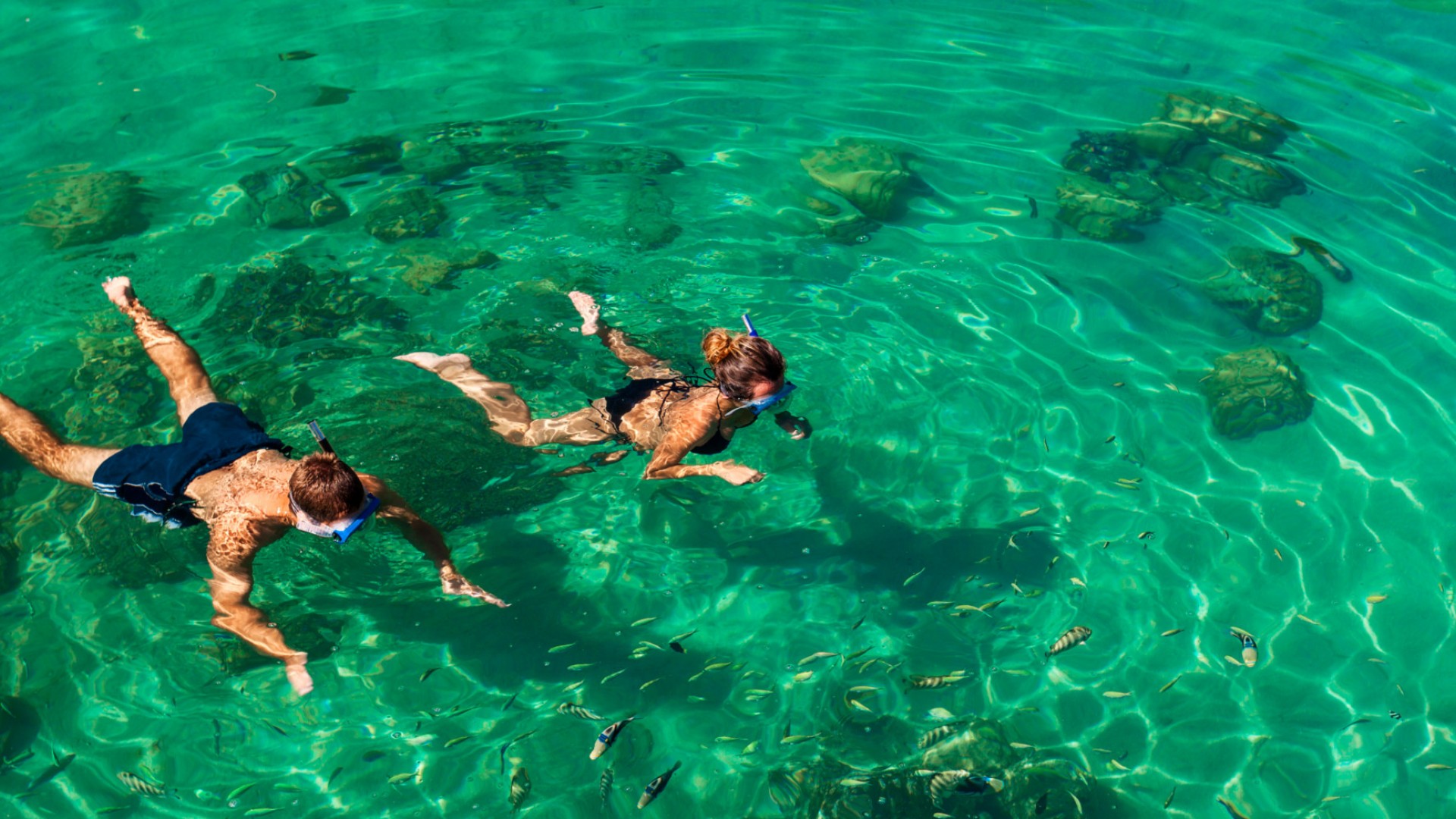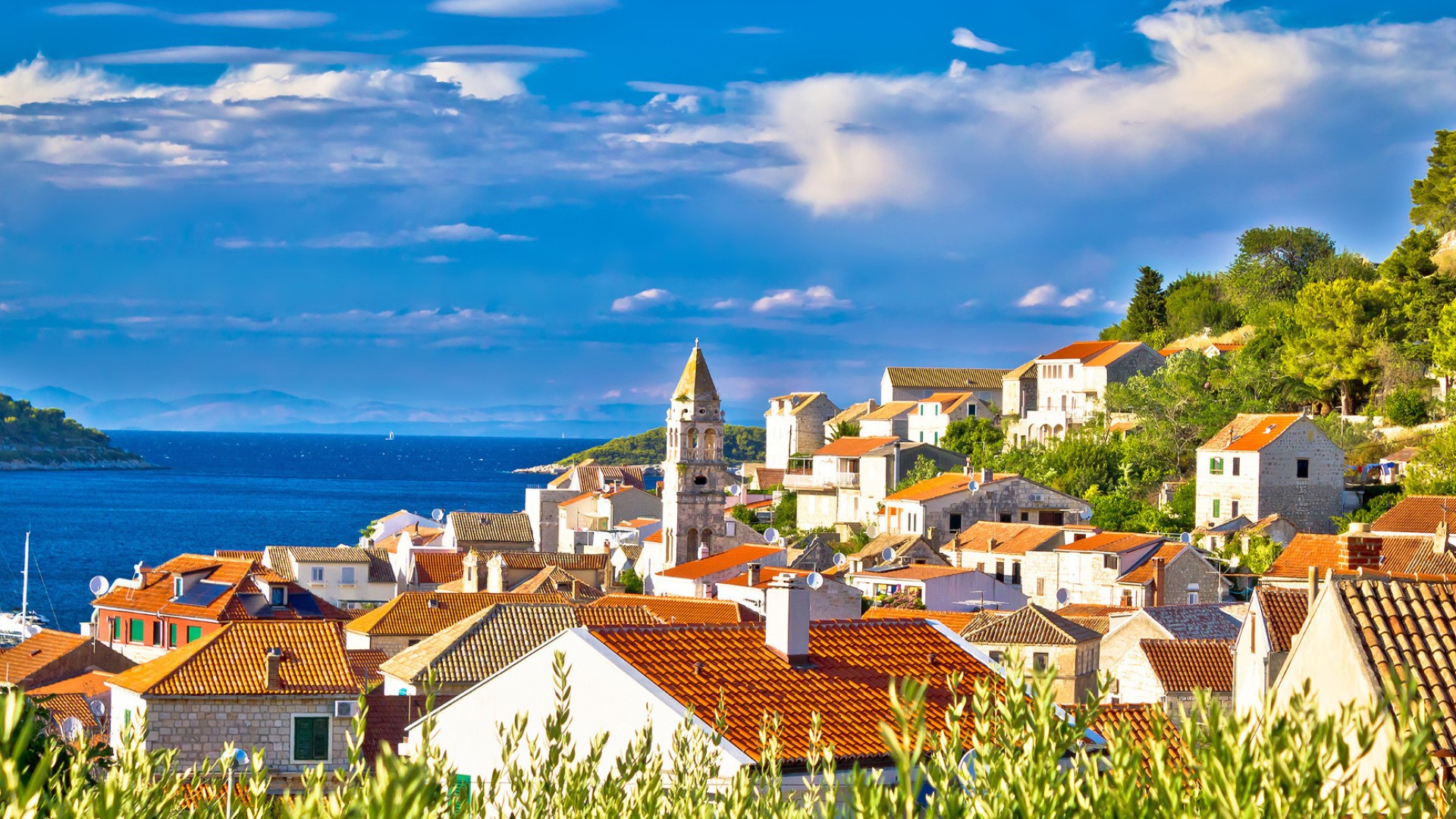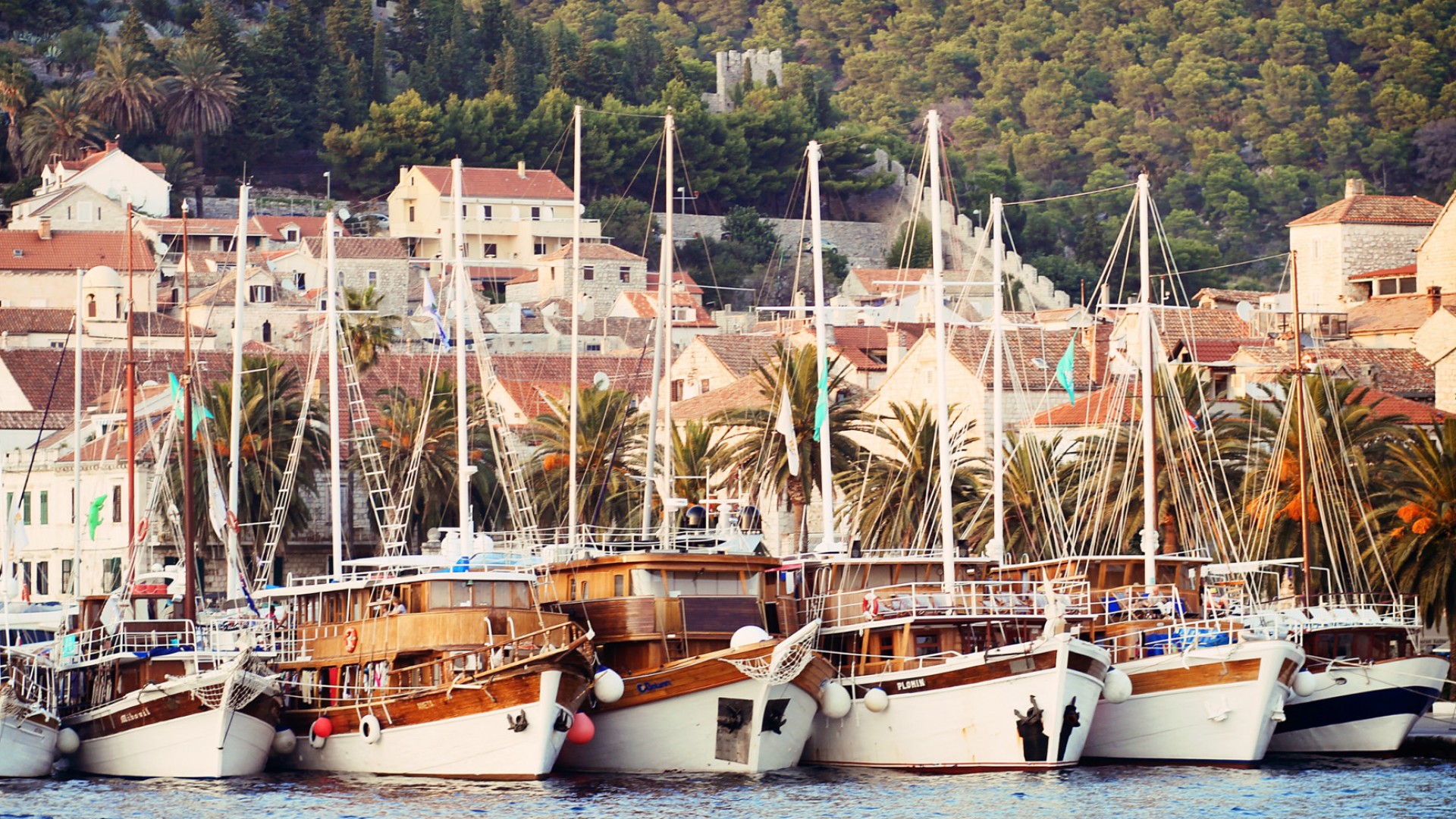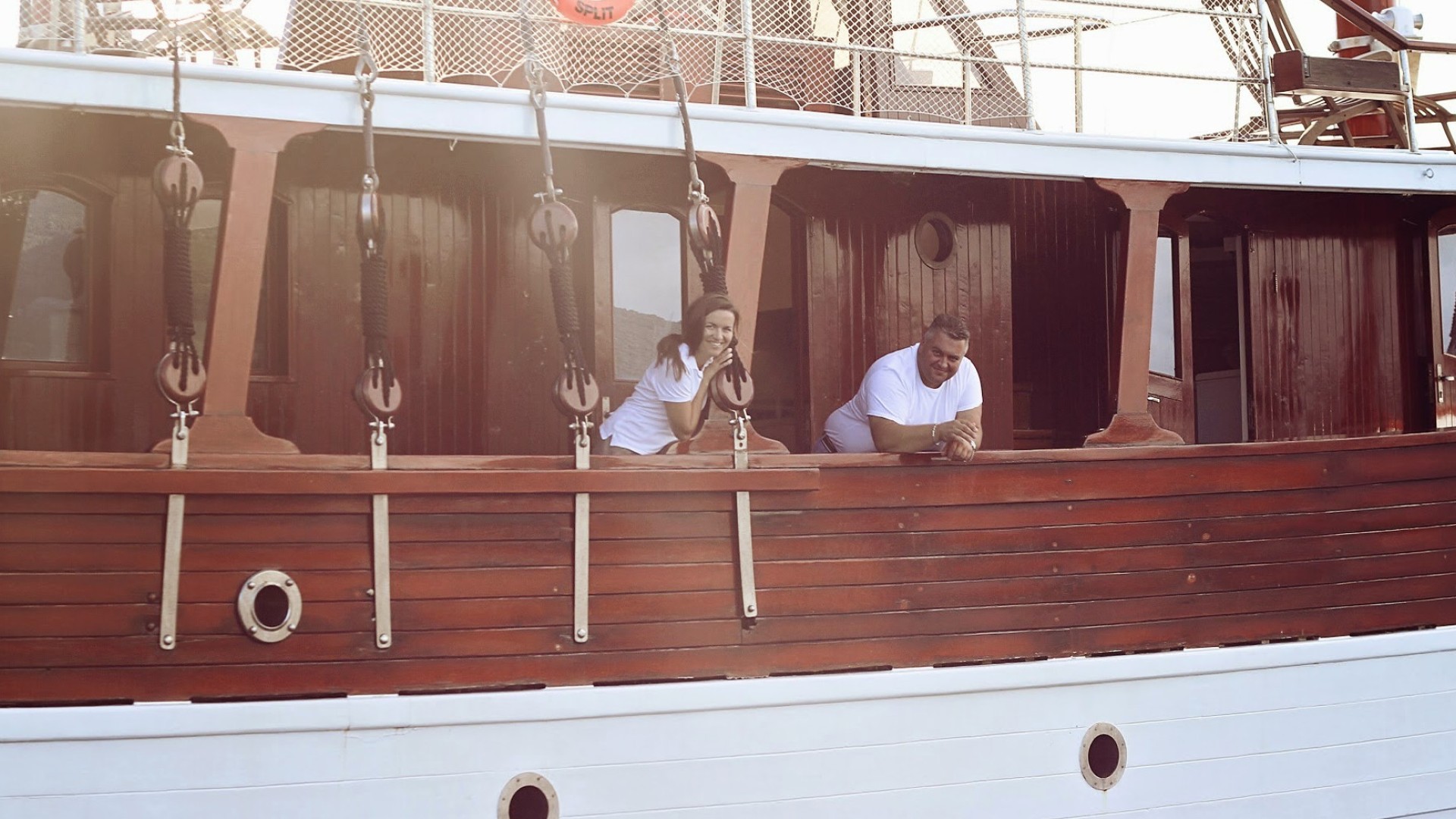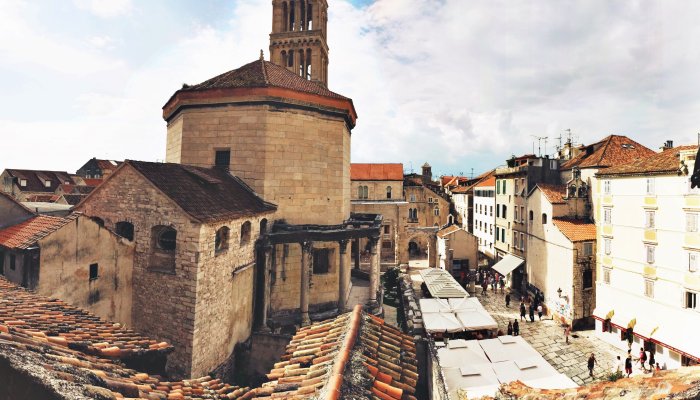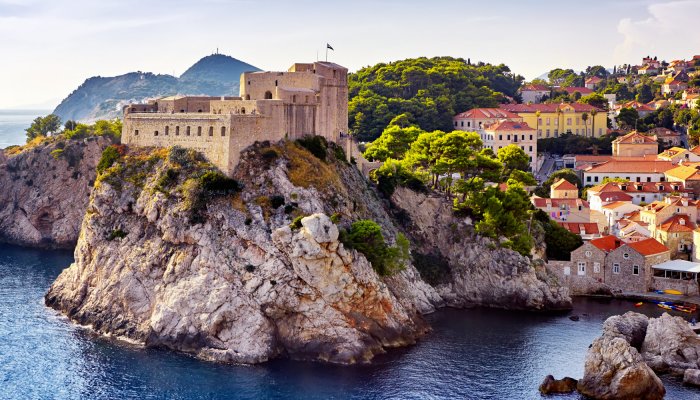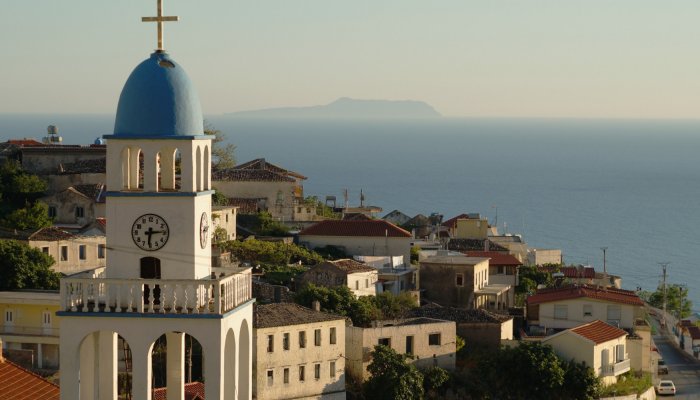Overview
With more than 3,600 miles of coastline, Croatia is a waterfront paradise. The southernmost Dalmatian Coast is home to Dubrovnik, a city often referred to as “The Pearl of the Adriatic.” A thriving city during the Middle Ages, Dubrovnik’s history is preserved in much of its architecture including town squares, churches, alleyways, and fortresses. Vineyard-clad hillsides, coastal mountains, and golden strands of beaches line colorful European coastline, dotted with hidden coves and charming cities to be explored.
Swim, snorkel, and paddle through the glimmering azure water of the Adriatic Sea on the vacation of a lifetime. In addition to active exploration, Adventures Unbound believes that one cannot truly experience Croatia without tasting the fresh, authentic local cuisine and fine wine! Enjoy the slow pace, savor each sip of wine, recharge, and unwind on this Mediterranean vacation of a lifetime.
Our Trips
Custom Tours in Croatia
With Adventures Unbound, discover Croatia’s breathtaking coastline and spectacular culture by foot, sail, or paddle led by expert local guides who know the country’s landscapes and history like the back of their hand. Explore the scenic coastline and lively cities of Croatia in a more customized and intimate travel style.
Working closely with local partners and affiliates in Croatia, let us curate a private tour that reflects your interests, whether it’s scaling mountains, relaxing sea side or discovering new cultures. All of our customized tours in Croatia include delicious local cuisine and comfortable accommodations.
To get started, please fill out the form below, or you can learn more by reading some of our most frequently asked questions.
Image & Video Gallery
Related Blogs
Meet Our Guides

Ivana Grzetic
Croatia Adventure Guide
Ivana was born and raised in Dubrovnik in a "crazy about the sea" family of scuba divers and sea kayakers. She is a graduate of ACMT (American College of Management and Technology) in Dubrovnik. As Miss Universe Croatia 1998 and a fashion model, Ivana traveled all over the world, including Hawaii, California, Hong Kong, China, South Korea and Europe. She now looks forward to sharing her knowledge and love of the Dubrovnik region and the sea with our guests.

Jelena
Croatia Adventure Guide
Our Croatia guide Jelena loves outdoor sports and she joined our team last year. She is also yoga and Pilates instructor, an alpinist climber and a skier and she graduated from the faculty for economics.
FAQ's
What immunizations are recommended or required?
There are no required vaccinations for visiting Croatia. However, the Center for Disease Control and Prevention (CDC) advises that travelers should be up-to-date on their routine vaccinations, including measles, chickenpox, diptheria, tetanus, and polio. It’s also recommended that you are protected against hepatitis A and hepatitis B, as well as rabies if you plan on being in close contact with animals.
Can I drink the water in Croatia?
Yes, it is safe to drink tap water in Croatia or you can easily find bottled water at local shops and supermarkets. The country has generally high hygiene standards when it comes to food preparation, so eating salads and peeled fruit at restaurants shouldn’t be an issue.
What type of Currency is used? Exchange Rate? Are US dollars accepted?
The currency in Croatia is the Euro. You can either exchange currency before you travel or get it from an ATM when you arrive, again watch for the exchange rate. Remember, it is never a good idea to keep a lot of cash on you while you are traveling, but in local shops and markets having some Kuna on you is helpful.
US dollars are not accepted in Croatia but there are plenty of exchange houses and banks in most towns and at the airports where you can easily change money. Banks are generally open from 8 am to 4 pm Monday to Friday. Most hotels and restaurants in the cities and major tourist destinations will accept credit cards. However, in more rural areas, it’s a good idea to carry some cash for payment. Mastercard and Visa are the most accepted credit cards, with American Express and Diners Club accepted in some establishments.
What time zone is Croatia in?
Croatia is in Central European Standard Time (GMT+1) and observes daylight savings time from around the end of March to the end of October.
What is the official language of Croatia?
Croatian is the official language of Croatia and is spoken by 95% of the population. It’s based on the most widespread dialect of Serbo-Croatian, Shtokavian, with the other two major dialects spoken in the country being Chakavian and Kajkavian.
Due to immigration over the years, Croatia is also home to minority communities of Slovaks, Serbs, Bosnians, Hungarians, Czechs, and Italians, all of whom speak their native languages. In tourist areas, you will find many people who speak English and restaurant menus are often provided in English, although this might not necessarily be the case in more rural areas.
Do I need a visa or passport to travel to Croatia?
U.S. citizens require a passport valid for at least three months beyond planned departure date to visit Croatia. A visa is not required if you hold a valid U.S. passport and travel for business or tourist trips that last less than 90 days within each 180-day period. If you’re staying less than 90 days for tourist purposes, a visa is not required to enter Croatia for citizens of most European countries, the United States, Canada, Australia, and New Zealand.
Croatia is a Member of the European Union (EU), but it is not yet a member of the Schengen area. As such, travelers need a passport to travel between Croatia and other EU member states.
Foreign citizens must register with the local police within 24hrs of arrival in Croatia to inform then of any change of address. If you are staying in a hotel, a place rented through an accommodation company, hostel, or campsite, the company or hotelier will automatically register you.
Do I need Travel Insurance?
It’s not compulsory to have travel insurance when visiting Croatia but it is highly recommended. It will protect you against any financial loss from injury, illness, or theft, as well as covering the costs of any transport cancellations or delays. Before purchasing any travel insurance policy, you should carefully check what is covered and what is not, so you aren’t left with any surprises later on.
What is the best way to get around once I'm there?
Croatia Airlines offers domestic flights from its main hub in Zagreb to tourist hotspots such as Dubrovnik, Split, and Zadar. A limited number of destinations are also connected to the Croatian capital by train, although bus is your best option if you’re traveling along the coast. Buses in Croatia are efficient and relatively inexpensive, with a number of different companies creating healthy competition. It’s important to note that buses traveling between Split and Dubrovnik will pass through Bosnian territory, so be sure to have your passport handy.
Numerous ferries connect Croatia’s coastal cities to its offshore islands, with Split, Dubrovnik, Šibenik, Zadar, and Rijeka all major hubs. They operate throughout the year but with more frequent services in the busy summer months.
Car hire is available in all major towns and cities throughout Croatia, as well as at its airports. While the international chains are represented, it’s often cheaper to go with one of the independent local companies. To rent a car, you must be at least 18 years of age and have a valid driver’s license, as well as a credit card to secure the insurance excess. In Croatia, they drive on the right-hand side of the road and seatbelts are compulsory. From October to March, you must drive with your headlights on, even if you’re driving in broad daylight. When using motorways, be aware that there may be tolls, so keep some kuna handy to pay.
Cycling is a popular way of exploring Croatia’s flatter islands, such as Pag and Mali Lošinj. However, caution should be taken if cycling between the coastal cities, most of which are connected by busy highways.
When are the best times to visit Croatia?
Croatia’s peak travel season is July and August during the height of summer when much of Europe is on its annual holiday. The days are hot and ideal for being at the beach, although you will have to compete with large crowds for a spot on the sand. The shoulder months of May/June and September/October are a good alternative, with fewer visitors and milder temperatures that are perfect for exploring the national parks and cities.
From October through to March, Croatia becomes much quieter and many of the hotels, restaurants, and attractions in major tourist areas will be closed altogether. If you’re planning on traveling inland, the temperatures can be chilly over the winter months and snow is often encountered at higher altitudes. The rainiest month along the coast is December while inland it is August.
What kind of adapters will I need for my electronics?
Croatia uses standard European sockets with round, two-pronged plugs and the voltage is 230V. Citizens of the United States and Canada will need a power plug adapter and voltage converter to use their appliances in Croatia, but these are easy to find locally if you forget.
How much should I tip in Croatia?
Tipping in Croatia is not mandatory but is always welcomed by those in the service industry. At restaurants, they usually don’t have a space to tip on the bill but offering 10% or rounding up is appreciated. If you want to leave a tip for cleaning staff or porters, it’s best to do so in kuna, so always carry some change with you. Guides in tourist hotspots will be more accustomed to receiving tips in foreign currency, provided they are easily exchanged at local bureaus.
Is travel to Croatia safe?
Generally speaking, Croatia is a very safe country to visit, with crime levels (including violent crime) relatively low. That being said, you should always exercise normal precautions when traveling, particularly in popular tourist destinations where pickpocketing and petty theft occasionally occur. Always keep your wallet or purse somewhere safe and avoid flashing expensive jewelry or camera gear around. If you are concerned about safety, we recommend traveling with a reputable tour company and check any current travel warnings issued by the U.S. Department of State prior to leaving home.
Are there cultural sensitivities I should be aware of?
Croatia is a predominantly Roman Catholic country, so dressing modestly is the norm. People tend to care about their appearance and will rarely duck out of the house to do something unless they are wearing appropriate attire.
Things often run late in Croatia, so don’t be offended if someone is slightly late to meet you. What is considered rude, however, is only meeting up with someone briefly or being in a rush to leave.
When it comes to greetings, men usually shake hands and making eye contact is important. Women will often greet their friends with a kiss on each check but will shake hands with men or new acquaintances. If you’re not sure what to do, just put your hand out to shake and follow along if they initiate the double cheek kiss!
What is the food like? Any special dishes or local delicacies I should try?
Croatian cuisine has been heavily influenced by the tastes and dishes from neighboring countries, as well as the nation’s diverse regions. From the mountains of the Dinaric Alps to the Dalmatian Coast, you’ll find touches of Italian and Mediterranean gastronomy, as well as Austrian, Hungarian, and Turkish culinary traditions.
Not to miss dishes include black risotto (known locally as crni rižot), which features cuttlefish with olive oil, garlic, red wine, and squid ink. Also popular along the coast is brudet, a seafood stew that hails from Italy’s Marche region, and buzara - mussels cooked in a garlicky wine broth.
On Istrian menus, look out for boškarin, long-horned oxen that’s often served as carpaccio, salami, or steak. It also appears regularly in fuži, a quill-shaped pasta dish that may also be served with beef, chicken and wild game sauce. Other Istrian specialties include pršut (ham), which often accompanies cheese platters, and truffles from the Motovun forests.
Desserts in Croatia range from baklava to strudel and crepes, as well as knedle dumplings filled with plums. When it comes to wine, Malvazija is one of the country’s signature white wines while Teran is a robust red that makes an ideal accompaniment to meat dishes. Rakija is widely popular, as is coffee, with traditional coffee houses found throughout the country where you can mingle with the locals.
Will debit and credit cards work in Croatia?
ATMs are widely available throughout Croatia; just look for a Bankomat sign.
Most large restaurants and hotels accept credit cards. However, smaller businesses or private accommodations often only take cash, so it’s wise to have some on you.
Large businesses widely accept Visa, Mastercard, and Diners, though they less frequently accept American Express.
Before you leave home, check your bank network, find out your daily withdrawal limit, and keep in mind that banks may charge fees for a card used at another bank’s ATM—a fee that may be higher for international transactions. Also, a 4-digit PIN is required to withdraw money in Croatia.
Will I have phone service or WiFi?
If you plan to use your mobile phone while in Croatia, be aware of and look into international data roaming charges as well as any likely call costs. Croatia operates on a GSM 900/1800 frequency, so it’s also important to ascertain if your phone is equipped for this frequency before travelling.
Travelers often buy kits with a simple phone equipped with a prepaid SIM card.
Or, alternatively, if your phone is unlocked and compatible, it is possible to purchase a pay-as-you-go SIM card in Croatia through a start-up package offered by Croatia’s mobile phone operators.
A growing number of hotels, cafés, and hostels also offer customers free wi-fi access, and internet cafés can be seen in many Croatian cities and resorts across the Adriatic.


